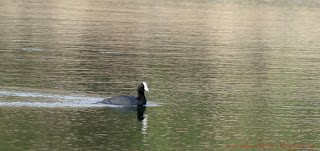This was the first Great Backyard Bird Count (GBBC)
that I spent solely counting in my backyard. Normally for this four-day international
event, which ran this year from February
12-15th, I would have visited a few local birding locations and
would have ended the event with 35+ species recorded. This was not possible this year because the
island is on “pause” because of the second wave of the COVID virus. The GBBC is an event that engages birders from across the
world, of all ages, in counting birds to create a real-time snapshot of bird
populations worldwide. Participants are
not tied to their backyards but can submit a checklist from any location.
Carib Grackle
I did my
count on the morning of February 13th. A Carib Grackle (Quiscalus
lugubris) and a Bananaquit(Coereba flaveola) are both in the
process of constructing a nest in the Bajan
(Barbados) Cherry Tree (Malpighia
emarginata) just outside my bedroom window, and I realized that it attracted
a lot of other species. Where ever Carib Grackles are nesting you will
find Shiny Cowbirds (Molothrus bonariensis) and four of them came to the tree. Cowbirds are brood parasites, in that they lay their eggs in another
bird's nest, relying on them to raise their young. Carib Grackles are the main host for this behavior. I was soon joined by a pair of Yellow Warblers (Golden) (Setophaga petechial) and three noisy Caribbean Elaenia (Elaenia martinica) on my back fence. 
A female Shiny Cowbird
All in all, I saw only a few common birds, like Eurasian Collared-Doves (Streptopelia decaocto), Cattle Egrets (Bubulcus ibis) and Gray Kingbirds (Tyrannus 
Eurasian Collared-Dove
- Scaly-naped Pigeon (Patagioenas squamosa)
- Eurasian Collared-Dove (Streptopelia decaocto)
- Zenaida Dove (Zenaida aurita)
- Cattle Egret (Bubulcus ibis)
- Rose-ringed Parakeet (Psittacula krameri)
- Caribbean Elaenia (Elaenia martinica)
- Gray Kingbird (Tyrannus dominicensis)
- Shiny Cowbird (Molothrus bonariensis)
- Carib Grackle (Quiscalus lugubris)
- Yellow Warbler (Golden) (Setophaga petechia)
- Bananaquit (Coereba flaveola)
- Barbados Bullfinch (Loxigilla barbadensis)
- Black-faced Grassquit (Melanospiza bicolor)








